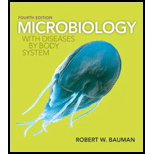
Concept explainers
(1)
To define:
What are the diagnosis and causative agent?
Case summary:
In the given summary, a 43-year-old immigrant from Thailand reports to the clinic with his 9-year-old son who has bloody diarrhea with mucus, stomach pain, and fever for past 24 hours. However, he reports that his son was healthy when they arrivedin the United States a week prior to the start of these symptomsRound protozoan cysts are microscopically identified in the stool of the boy.
(2)
To determine:
What arethe other diseases caused by these organisms?
Case summary:
In the given summary, a 43-year-old immigrant from Thailand reports to the clinic with his 9-year-old son who has bloody diarrhea with mucus, stomach pain, and fever for past 24 hours. However, he reports that his son was healthy when he arrived in the United States a week prior to the start of these symptomsRound protozoan cysts are microscopically identified in the stool of the boy.
(3)
To determine:
Describe the other diseases caused by these organisms?
Case summary:
In the given summary, a 43-year-old immigrant from Thailand reports to the clinic with his 9-year-old son who has bloody diarrhea with mucus, stomach pain, and fever for past 24 hours. However, he reports that his son was healthy when he arrived in the United States a week prior to the start of these symptomsRound protozoan cysts are microscopically identified in the stool of the boy.
(4)
To determine:
How these patients likely acquire this disease?
Case summary:
In the given summary, a 43-year-old immigrant from Thailand reports to the clinic with his 9-year-old son who has bloody diarrhea with mucus, stomach pain, and fever for past 24 hours. However he reports that his son was healthy when he arrived in the United States a week prior to the start of these symptoms. Round protozoan cysts are microscopically identified in the stool of the boy.
(5)
To determine:
What is the best treatment for this?
Case summary:
In the given summary, a 43-year-old immigrant from Thailand reports to the clinic with his 9-year-old son who has bloody diarrhea with mucus, stomach pain, and fever for past 24 hours. However, he reports that his son was healthy when he arrived in the United States a week prior to the start of these symptomsRound protozoan cysts are microscopically identified in the stool of the boy.
Want to see the full answer?
Check out a sample textbook solution
Chapter 23 Solutions
Microbiology with Diseases by Body System (4th Edition)
- please draw in what the steps are given. Thank you!arrow_forwardplease draw in and fill out the empty slots from image below. thank you!arrow_forwardThere is a species of eagle, which lives in a tropical forest in Brazil. The alula pattern of its wings is determined by a single autosomal gene with four alleles that exhibit an unknown hierarchy of dominance. Genetic testing shows that individuals 1-1, 11-4, 11-7, III-1, and III-4 are each homozygous. How many possible genotypes among checkered eagles in the population?arrow_forward
- students in a science class investiged the conditions under which corn seeds would germinate most successfully. BAsed on the results which of these factors appears most important for successful corn seed germination.arrow_forwardI want to write the given physician orders in the kardex formarrow_forwardAmino Acid Coclow TABle 3' Gly Phe Leu (G) (F) (L) 3- Val (V) Arg (R) Ser (S) Ala (A) Lys (K) CAG G Glu Asp (E) (D) Ser (S) CCCAGUCAGUCAGUCAG 0204 C U A G C Asn (N) G 4 A AGU C GU (5) AC C UGA A G5 C CUGACUGACUGACUGAC Thr (T) Met (M) lle £€ (1) U 4 G Tyr Σε (Y) U Cys (C) C A G Trp (W) 3' U C A Leu בוט His Pro (P) ££ (H) Gin (Q) Arg 흐름 (R) (L) Start Stop 8. Transcription and Translation Practice: (Video 10-1 and 10-2) A. Below is the sense strand of a DNA gene. Using the sense strand, create the antisense DNA strand and label the 5' and 3' ends. B. Use the antisense strand that you create in part A as a template to create the mRNA transcript of the gene and label the 5' and 3' ends. C. Translate the mRNA you produced in part B into the polypeptide sequence making sure to follow all the rules of translation. 5'-AGCATGACTAATAGTTGTTGAGCTGTC-3' (sense strand) 4arrow_forward
- Understanding Health Insurance: A Guide to Billin...Health & NutritionISBN:9781337679480Author:GREENPublisher:Cengage
 Comprehensive Medical Assisting: Administrative a...NursingISBN:9781305964792Author:Wilburta Q. Lindh, Carol D. Tamparo, Barbara M. Dahl, Julie Morris, Cindy CorreaPublisher:Cengage Learning
Comprehensive Medical Assisting: Administrative a...NursingISBN:9781305964792Author:Wilburta Q. Lindh, Carol D. Tamparo, Barbara M. Dahl, Julie Morris, Cindy CorreaPublisher:Cengage Learning Biology 2eBiologyISBN:9781947172517Author:Matthew Douglas, Jung Choi, Mary Ann ClarkPublisher:OpenStax
Biology 2eBiologyISBN:9781947172517Author:Matthew Douglas, Jung Choi, Mary Ann ClarkPublisher:OpenStax





